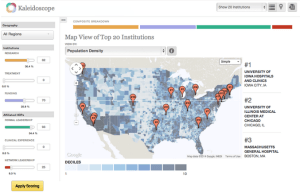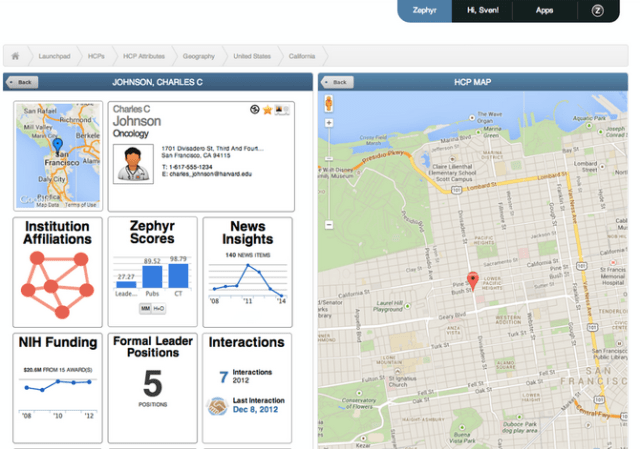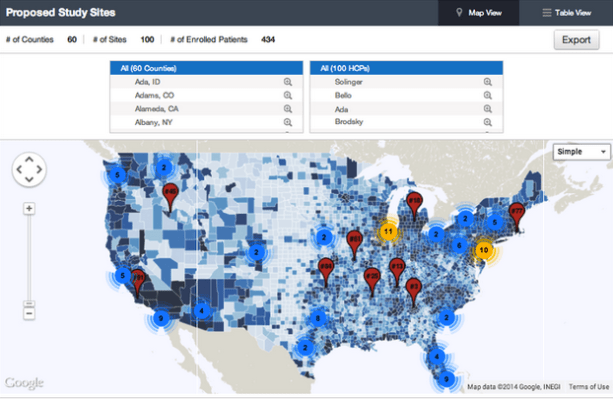The Big Data landscape continued to explode in 2013, as companies across the board scrambled to update infrastructure and technology to meet the new set of demands and opportunities brought on by a brave new, data-happy world. Investors responded in kind, pouring just over $3.6 billion into the Big Data ecosystem during the year, setting off a flurry of activity in the market, from IPOs and acquisitions to new Big Data-centric venture funds.
While hype abounds in Big Data Land, these new technologies can provide the means to more easily collect and analyze data from an array of sources without breaking the bank — a key benefit to industries like healthcare. In the disconnected environment surrounding healthcare and life sciences, companies struggle to glean insight from the variety of data and fragmented sources where that data lives — at scale — while managing costs.
After five years of mining Johnson & Johnson’s diverse data sets to help physicians identify better therapies, William King launched Zephyr Health in 2011 to help life science companies improve research and reduce the time it takes to bring their therapies to market.
Today, Zephyr Health joined the growing ranks of Big Data startups in healthcare and life sciences drawing big money from investors, announcing $15 million in new venture financing in a round co-led by Kleiner Perkins and Jafco Ventures. As a result of the new investment, Kleiner partner Brook Byers and Jafco Partner Joe Horowitz will be joining the startup’s board of directors.
The appeal of Zephyr Health’s platform compared to others bringing Big Data tools to life sciences, like the recently-funded ClearDATA for example, is that it combines NoSQL databases, machine-learning algorithms and data visualization to help life sciences companies more quickly gain insight a diverse set of data sources. Zephyr leverages these technologies to help companies improve their R&D efforts and bring new treatments to the right physicians in the healthcare funnel, reducing the cost and time it takes to complete research and bring therapies to market.
 However, in an industry where companies are scampering to move to the cloud and take advantage of the efficiencies Big Data tools can provide, Zephyr wants to increase its value proposition for industry players by going beyond data integration — something a host of solutions now offer, whether industry-specific or not. To do that, Zephyr not only processed data from multiple sources, but funnels that data into a suite of proprietary apps that have been designed specifically to handle life science information.
However, in an industry where companies are scampering to move to the cloud and take advantage of the efficiencies Big Data tools can provide, Zephyr wants to increase its value proposition for industry players by going beyond data integration — something a host of solutions now offer, whether industry-specific or not. To do that, Zephyr not only processed data from multiple sources, but funnels that data into a suite of proprietary apps that have been designed specifically to handle life science information.
Through the suite of apps, companies can view their data within contexts or scenarios that are endemic to the research and development of therapies. For example, companies can use one app to see how different patients reach to a particular drug administered during a trial, or, once the drug is ready to go to market, they can use another app to quickly see which institutions or clinics fit the right criteria and could be potential customers. Furthermore, another app might then allow the company to go deeper and not only see which clinics fit the bill, but view doctor profiles to see which physicians specialize in the kind of therapy or treatment offered by their wonder drug.
Ultimately, by linking key datasets together, Zephyr wants to enable scientists to focus their research, while providing life science companies with a suite of visualization tools to help them accelerate trials and reduce the cost and time inherent to marketing those therapies. Over the last year, the company has begun to see increasing validation of its approach to Big Data in life sciences, as King said that “five of the world’s largest pharmaceutical and device companies” are have become paying customers.
Considering that it can take these businesses up to 10 years and $4 billion to bring a drug to market, it’s no wonder. Any solution that helps drug companies tear down the barriers between fragmented data sets and improve the efficiency of the research and development process — with purpose-built apps that help surface the right information at the right time — is well positioned in an industry racing to move to the cloud.
After two and a half years of bootstrapping, Zephyr will use its new funding to help ramp up hiring, particularly in engineering, and begin more actively marketing its solution among industry players.

